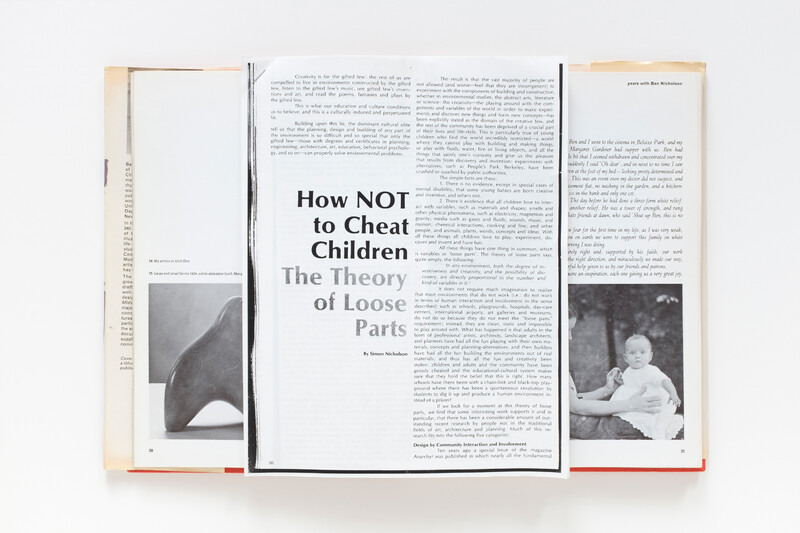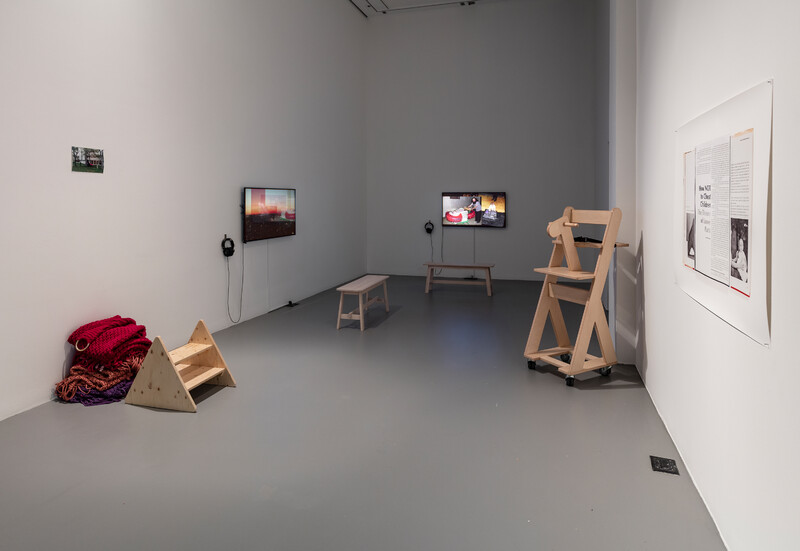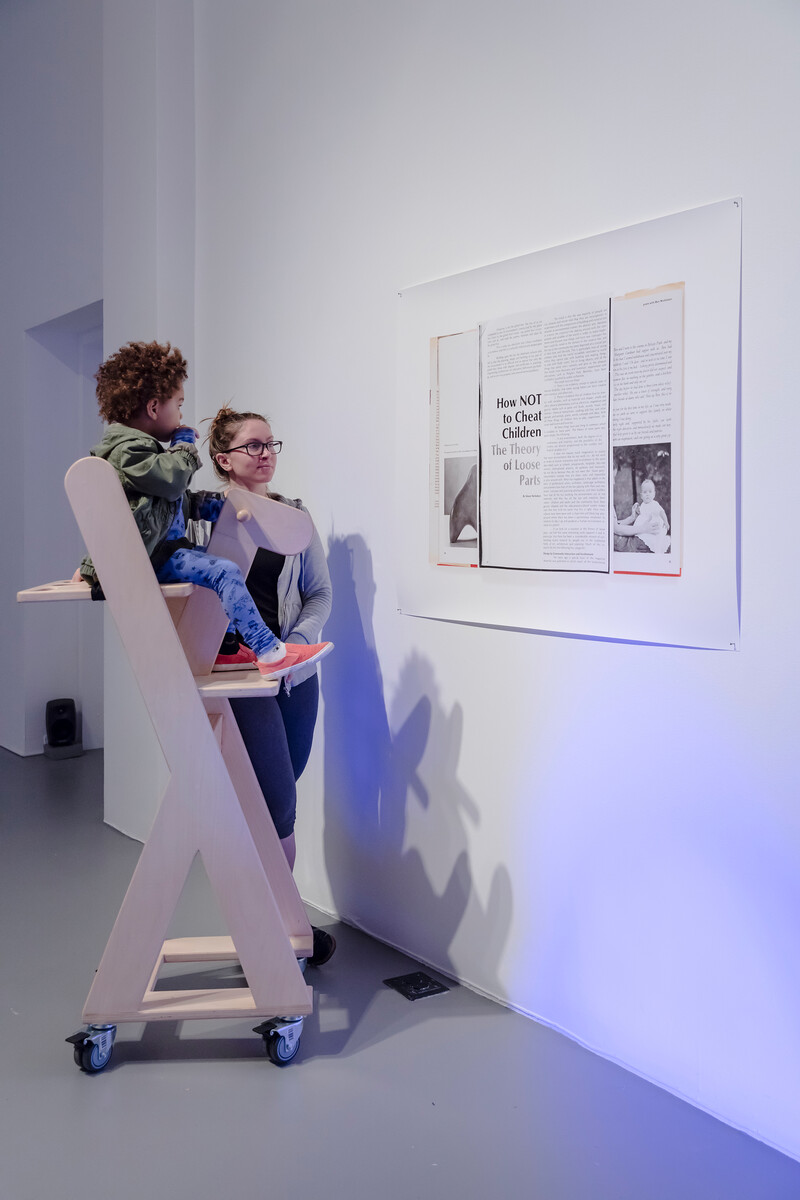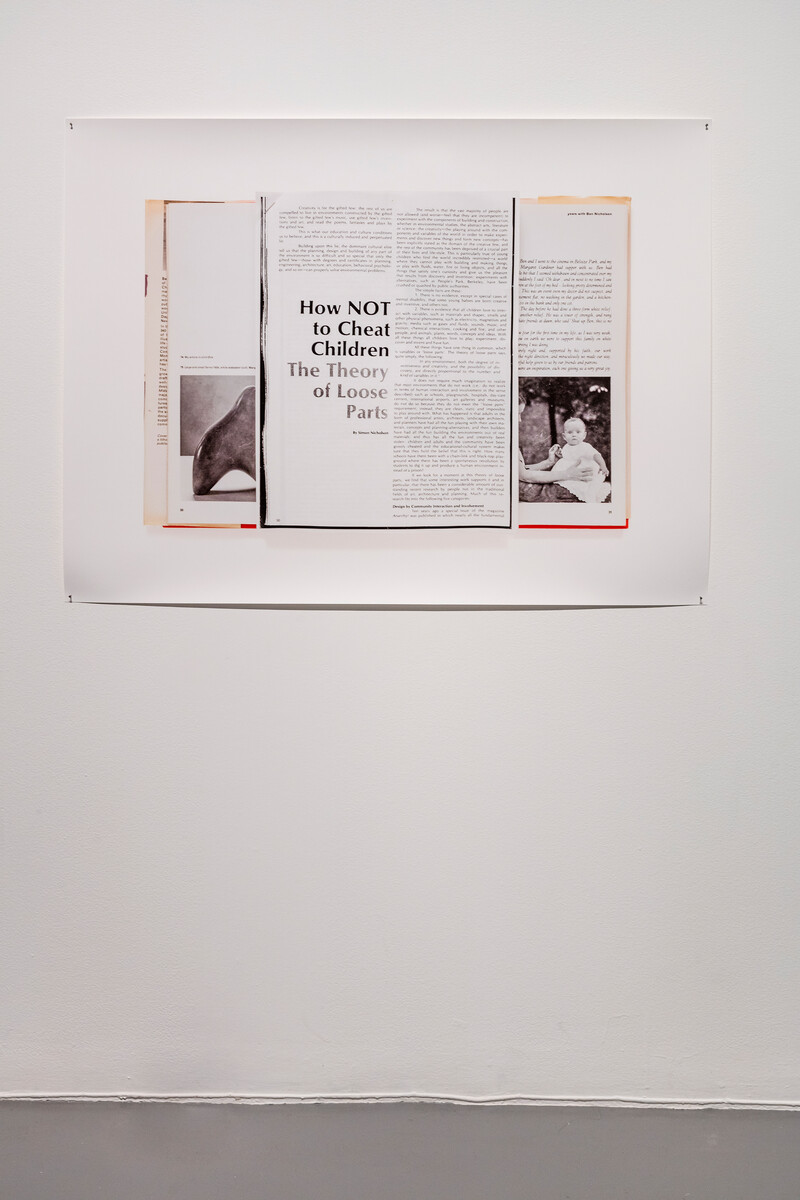




Conversations with Magic Forms
36in x 48in.
Leisure’s (Meredith Carruthers and Susannah Wesley) work Conversation with Magic Forms (2015- 2016) examines historic precedents of feminist calls to action and gendered labour reproduction. As The Let Down Reflex curators Amber Berson and Juliana Driever write, “the work investigates the studio practice of Barbara Hepworth, a UK sculptor and mother of four, including triplets, who integrated family life into her studio in the St. Ives artist colony. Hepworth’s model for playfulness in children and in the studio had a secondary effect, living on in the work of her son, architect Simon Nicholson. In the 1970s, he penned The Theory of Loose Parts, a radical child-led learning theory, which argues that environments with a large number of variables and moveable parts foster greater creativity, inventiveness, and discovery. Taking its name from a series of sculptural forms undertaken by Hepworth after the arrival of triplets in 1934, Leisure’s Conversation with Magic Forms evaluates the environment in which Nicholson’s text might have been imagined—the active space of Hepworth’s studio, where work and life were intertwined in a chaotic, creative, and materially diverse environment.”
Leisure’s research project resurfaces parenting histories that give children agency over their surroundings, allowing them to dictate the terms by which they build and shape their environment and encouraging a more involved mode of experiencing and making art.

The Blackwood
University of Toronto Mississauga
3359 Mississauga Road
Mississauga, ON L5L 1C6
[email protected]
(905) 828-3789
The galleries are open. Hours of operation: Monday–Saturday, 12–5pm.
Holiday hours: regular gallery hours are in effect until and including Saturday, December 6. The galleries will then be closed for the holidays, except for regular hours on Saturday, December 13. In 2026, the galleries reopen Monday, January 5.
Facebook | Twitter | Instagram
Sign up to receive our newsletter.
The Blackwood is situated on the Territory of the Mississaugas of the Credit, Seneca, and Huron-Wendat.